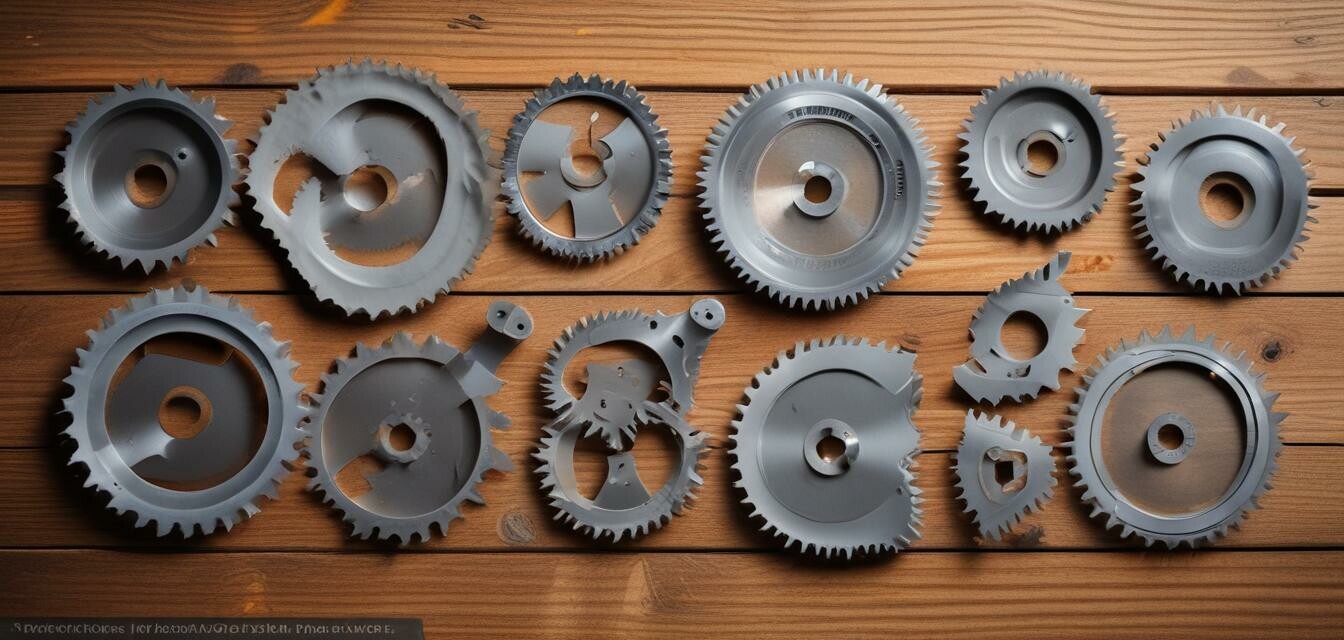
Choosing the Right Blades for Your Power Tools
Key Takeaways
- Different cutting tasks require specific blade types.
- Understanding blade materials and tooth configurations is crucial.
- Proper blade maintenance extends longevity and performance.
- Safety measures should always be adhered to when changing blades.
- Knowing compatible blades for various power tools enhances efficiency.
Choosing the right blades for your power tools can drastically affect the quality and efficiency of your cutting projects. This guide aims to provide you with essential information on selecting the appropriate blades for different power tools and cutting tasks. Whether you're a contractor or a DIY enthusiast, understanding blade options will empower you to achieve precision in your work.
Understanding Blade Types and Their Applications
The first step in selecting a blade is understanding the type of blade best suited for the task at hand. Here’s a breakdown of common blade types and their specific applications:
| Blade Type | Suitable For | Best Used With |
|---|---|---|
| Circular Saw Blades | Cutting wood, metal, and plastic | Circular Saws |
| Jigsaw Blades | Curved and intricate cuts | Jigsaws |
| Reciprocating Saw Blades | Demos and rough cuts | Reciprocating Saws |
| Oscillating Multi-Tool Blades | Flush cuts and sanding | Multi-Tools |
| Band Saw Blades | Cuts curves and straight lines | Band Saws |
Choosing the Right Tooth Configuration
The tooth configuration of a blade plays a significant role in cutting performance. Here's a quick reference on how different configurations impact the cutting process:
| Tooth Configuration | Ideal For | Notes |
|---|---|---|
| Fine Tooth | Delicate materials and a smooth finish | Best for plywood and laminates |
| Medium Tooth | General purpose cutting | Versatile for different materials |
| Coarse Tooth | Quick cuts in softwood and thick materials | Efficient in rough cuts |
Blade Materials: What You Need to Know
The material of the blade is just as important as its type. Here are some common materials used in blade manufacturing:
- High-Speed Steel (HSS): Durable and economical, good for general-purpose blades.
- Tungsten Carbide: Offers longevity and is excellent for cutting tough materials.
- Bi-metal: Combines flexibility and toughness, ideal for demanding cuts.
How to Properly Maintain Your Blades
Taking care of your blades will prolong their lifespan and maintain cutting efficiency. Here are essential maintenance tips:
Maintenance Tips
- Clean blades regularly to remove resin and debris.
- Inspect for dullness and replace when necessary.
- Store blades in a dry, safe place to prevent damage.
- Sharpen dull blades using the appropriate sharpening tools.
Safety Considerations When Changing Blades
Safety is paramount when working with power tools. Here are some important safety tips to keep in mind when changing blades:
- Always unplug your tool before changing the blade.
- Use the correct tools and technique to change blades.
- Wear appropriate personal protective equipment (PPE).
- Ensure the new blade is properly secured before use.
Compatibility with Various Tools
Not all blades fit all power tools. Knowing the compatibility of blades with your tools is crucial. Here’s a brief list of common power tools and the recommended blade types:
| Power Tool | Recommended Blade Type |
|---|---|
| Circular Saw | Circular Saw Blade |
| Jigsaw | Jigsaw Blade |
| Reciprocating Saw | Reciprocating Blade |
| Multi-Tool | Oscillating Blade |
| Band Saw | Band Saw Blade |
Final Thoughts
Choosing the right blades for your power tools is crucial for achieving optimal performance and results in your cutting tasks. By understanding blade types, configurations, and materials, along with proper maintenance and safety tips, you can ensure that every project runs smoothly.
Explore more about different types of angle grinders, cordless drills, and additional information in our buying guides to make the best choices for your toolkit.
For further tips and detailed support in using your tools, check out our How-To Guides. Enhance your skills and elevate your projects!